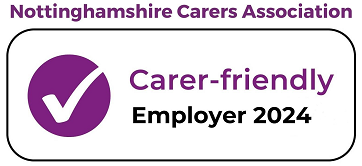Referral Guidelines for Bone Mineral Densitometry scans (DXA) for the Osteoporosis Service
The Osteoporosis service for DXA scans operates Monday to Friday between the hours of 9.00 am and 5.00 pm and is based within the Tony Hughes Treatment Centre at Mansfield Community Hospital. Our age group for DXA scan is 18 years and over.
Bone Densitometry
This is the use of a dual energy x-ray absorptiometry to establish bone mineral density of individuals considered to be at risk of having or developing Osteoporosis.
Bone Mineral Density measurement by DXA at the lumbar spine and proximal femur remain the current gold standard for the diagnoses of patients with osteoporosis and these are the scans that are currently undertaken within our service.
We would also perform a DXA scan at the wrist for following patients: bilateral hip replacements, hyperparathyroidism patients and also if a patient has a metal rod in the spine.
The dexa scanner is used to establish an individual’s bone mineral density in order to confirm diagnosis of osteoporosis.
The scan results would be used as a guide for identifying correct treatment and advice for each individual.
Scanning would also be used to review effectiveness of treatment and also development of osteoporotic disease.
Referral process
Referrals for a DXA scan can be accepted from either Consultants within the Sherwood Forest Hospitals Trust or via GP’s, but they need have undertaken appropriate training and be an authorised referrer. A list of signatures will be held within the Osteoporosis service in order to check referrer.
For both of these referrer groups there must be Clinical indications for the request for a DXA scan and these can be found in Appendix 1.
The GP’s have direct access for a DXA scan request via the e-Referral system (previously known as Choose and Book). There is a directory of service that informs them about referral criteria and information that is required from them in order for the request to be accepted. A list of the Clinical indications for request is seen in Appendix 1. The GPs will book an appointment for a DXA scan and complete the appropriate request details. The DXA scan request will then be assessed on the computer by one of the operators who will either accept or reject the referral. The operator will need to give a reason for rejecting the referral and it is then the responsibility of the GP to inform the patient of the cancelled appointment and re-refer appropriately.
A confirmation letter detailing a DXA scan appointment will be sent to the patient from the Medical records team at Mansfield Community Hospital, also enclosing a leaflet “Having a bone mineral density scan” leaflet (appendix 2) and a lifestyle questionnaire.
For Consultant referrals the appropriate referral card is completed and sent to the Osteoporosis service. This will then be assessed by one of the operators who will either accept or reject the referral and an appointment sent to the patient along with the appropriate leaflet and questionnaire as detailed above. If any request is received that does not fit the current list of indicators then the authoriser of the service will make the ultimate decision on the request.
Reporting of DXA scans
The Osteoporosis Nurse specialists will assess the lifestyle questionnaire and DXA scan results.
A report will be sent out to the GP who requested the DXA scan which will be authorised by the Consultants of the service.
For Consultant referrals: A report will be sent out to the referrer unless further assessment will be required in the form of an outpatient appointment (OPC).
Private patient referrals
Referrals for private patients are accepted but there must be a risk factor identified prior to any DXA scan being performed.
The patient will still need to obtain a referral request from either their GP or Consultant and must be marked “Private Scan”. This will then be triaged by the Osteoporosis team and an appointment sent to the patient if justified.
When the patient attends for their DXA scan they will be asked to sign the “undertaking to pay in respect of private health care” form, in order for payments to be sought.
A copy of the DXA scan results will then be given to the patient.





